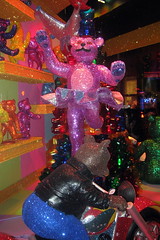What Does First-class ‘the Fool’ Tarot Card Possibly Stand For?
The fable of tarot cards started around the 15th century, a century after cards were introduced in Europe starting with the rising settlements in Italy. The evolution of Tarot as we know it today has a variety of stories and legends. The mystical excellent of tarot cards intrigues researchers, analyzers and spiritualists. Tarot cards were first used as game allotments like regular decks, unlike from what we think of tarot cards today, although a hint to Tarot as a set of devil cards was made in 1450. The ethnology of tarot cards started in Egypt, which is the same civilization that championed astrology.
The prevailing tarot deck is separated into what is commonly termed the major arcana or trump cards and minor arcane or suits of cards. The trump cards or major arcana consist of twenty two cards, every one of without suits. These include the fool, the Magician, the Empress, Justice, the Wheel of Fortune and others. The minor arcana is made up of of four suits of cards; swords, staves, cups and coins. Now, staves are generally named wands, but rods or batons are seen as well. Coins may be termed disks or pentacles in some tarot decks.
Tarot card interpretations are always changing – and they demonstrate also differed significantly through time. Now, all the same, there are common and general card meanings. For example, minor arcana cards as usual have an astrological meaning that changes along with the seasons of the year. On another side of things, court cards talk of populace and their nature. This nature concerns the physio-emotional traits of a individual.
More specifically, the determinants of a card’s meaning are the following: Card Number, decisive Number, Rulership (Astrology),
